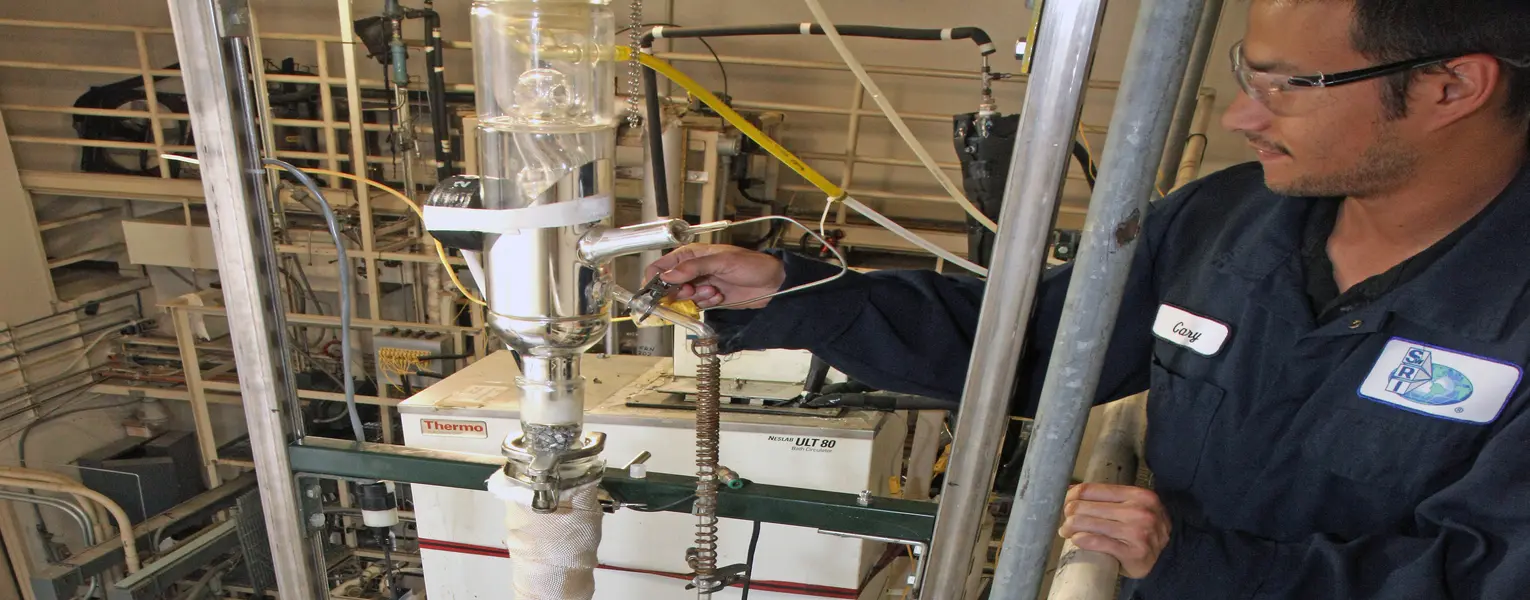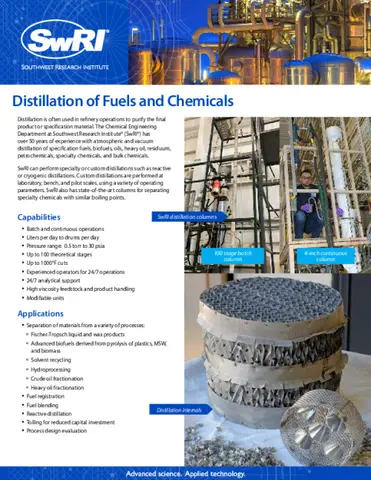Standard, custom, batch, and continuous distillations are performed at the Southwest Research Institute, where our facilities include both bench-scale and pilot-scale equipment. We excel at testing blends including typical refinery naphthas, distillates, heavy oils, and other client-specific feedstocks. Below is a sampling of our available analytical chemistry capabilities:
Laboratory Apparatus
- D 86 still: A small glassware batch still for making standard, atmospheric pressure distillations per ASTM D86.
- D1160 still: A glassware vacuum-jacketed, batch still designed for standard, vacuum distillations per ASTM D1160. It is typically used for characterizing the boiling properties of petroleum products that can be partially or completely vaporized below a maximum liquid temperature of 400°C.
- Vacuum pot still: A glassware, vacuum jacketed, 16-liter batch still for making standard, vacuum distillations per ASTM D5236. It is typically used for characterizing heavy hydrocarbon mixtures having initial boiling points greater than 150°C.
Bench Apparatus
- Glass 12-liter batch still: A 2-inch packed column that has the separation capability of 15 theoretical plates. It can operate under vacuum at less than 5 mm Hg.
- Stainless steel batch still: A 50-liter still that has an overhead rate of about 3 liters/hr. and a separation capability of up to 60 theoretical plates.
- 60-gallon batch still: A 6-inch packed column for 10 to 12 plates of separation of drum-scale samples under atmospheric or vacuum conditions.
Pilot Plant Equipment
- Hydrotreater still: This continuous feed, stainless steel, fractionating column is an integral part of the hydrotreater pilot plant. The column can process up to 2 gallons/hour and can operate at atmospheric pressure or under vacuum. The 2-inch I.D. packed column provides the equivalent separation of 30-50 theoretical plates.
- Continuous fractionator: This stainless steel, stand-alone unit can process 8 to 12 gallons/hour with 10% to 90% overhead products. It is equipped for vacuum operation to 0.2 psia and the preheated feed can enter via any of five column locations to vary the ratio of stripping to rectification. The fractionator provides up to 40 theoretical plates of separation capability, dependent upon the reflux rate.



